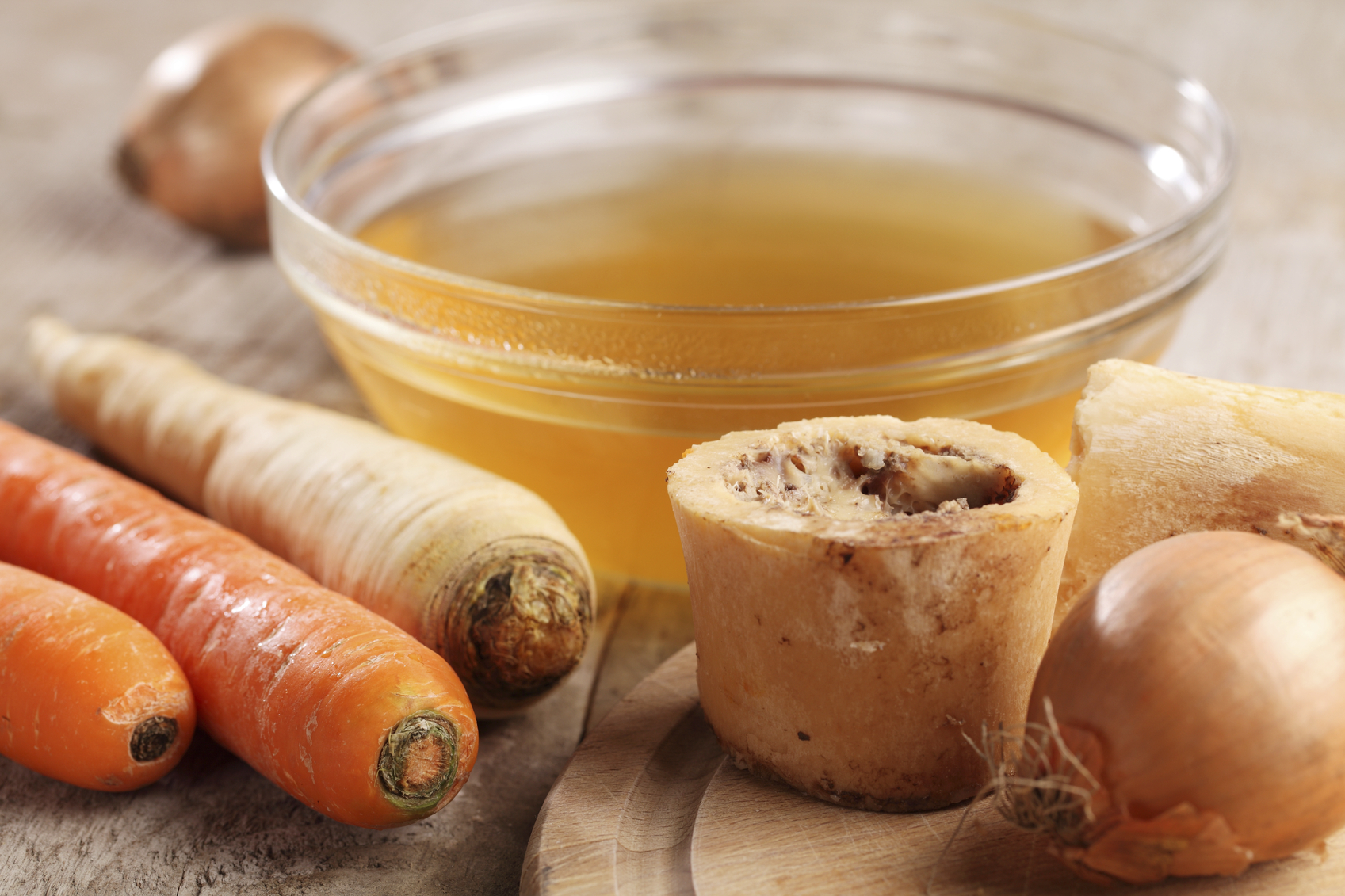Wellness Tips from Bon Appétit: Boiling Down the Bone-Broth Claims
- by bonappetit

Does bone broth live up to all of the hype?
Bone broth, one of the latest trends made popular by the paleo community, has been touted as a cure-all “superfood.” Proponents make broth sound like a miracle in a bowl, claiming benefits range from healing the gut and protecting joints to supporting the immune system, strengthening bones, increasing energy, and making those who drink it look younger. While these health claims might have you seeking out your nearest bone-broth bar (yes, it’s a thing!), be wary of grandiose claims surrounding what is essentially a cup of soup.
Making your own broth is a great way to reduce food waste, save money, and boost flavor and nutrition in your own kitchen.
Bone broth is made by roasting bones (usually chicken, beef, or fish) then simmering them, sometimes with the meat attached, along with vegetables (typically carrots, celery, and onion) and any herbs and spices. Many recipes call for a bit of vinegar, which is said to help release the minerals from the bones into the broth. The base recipe may sound familiar if you’ve ever made chicken soup from scratch. The key to bone broth (besides including the bones, of course) is that it is cooked for 24 hours or more before it is strained — much longer than many homemade stocks and broths. That allows the collagen and marrow to break down and permeate the broth fully.
Bone broth does contain important minerals such as calcium and magnesium that are essential to bone health, but these are not unique to this food. As recipes differ, so will the nutritional content. The USDA nutrient database does not have the nutrient breakdown for bone broth, but as a reference, Bon Appétit Management Company’s house-made stock, which is made with bones and vegetables and is simmered for 12 to 15 hours, contains about 20 milligrams of calcium per cup of stock (0.2% of the recommended daily allowance, or RDA). As a comparison, 1 cup of low-fat milk contains 300 milligrams (around 30% of RDA) and a half cup of black beans contains 150 milligrams (around 15% RDA), whereas at least this boxed version of bone broth sold at the grocery store contains no calcium. Magnesium, meanwhile, is found in a variety of plant foods including leafy greens, nuts, seeds, and whole grains.
So, although bone broth does add a small nutritional boost to food, more isn’t better in this case. One small study showed that the lead content of bone broth (both with and without additional meat) contained significantly higher amounts of lead than tap water, the control. (“Bones are known to sequester the heavy metal lead, contamination with which is widespread throughout the modern environment,” the study said.) While the amount in a cup is still low, it may not be wise to make a habit of drinking it with every meal.
The health claims surrounding gut health, radiant skin, and joint health are related to the collagen (also known as gelatin) content. This type of protein may be lacking in some Westernized diets since we eat primarily muscle meat; collagen is found in the skin and tendons, which we only consume via slow-braised dishes of certain cuts. However, the leap to the claim that bone broth will heal or protect your gut and joints is not well supported by research. One study that is often referenced by bone-broth advocates does suggest that chicken soup may provide mild anti-inflammatory benefits and reduce chest infections.
Making your own broth is a great way to reduce food waste, save money, and boost flavor and nutrition in your own kitchen. So as you cook during the week, toss vegetable scraps such as mushroom stems, carrot peels, green onion tops, and parsley stems as well as the bones and carcass from a whole chicken (or other animals) in the freezer to later make a batch of broth to use for soups, stews, and even to cook beans and grains.
In summary, although bone broth may not live up to many of the health claims that have projected onto it, a cup of from-scratch chicken soup is not only very soothing, it may also boost immunity. Maybe Grandma did know best!
At Bon Appétit, we know there’s a lot on your plate that you worry about. That’s why we have a team of registered dietitian nutritionists ready to answer your nutrition questions about which food choices will help you avoid unwanted pounds, work or study (and sleep!) better, and form long-lasting healthy eating habits. Email your questions and feedback to [email protected].